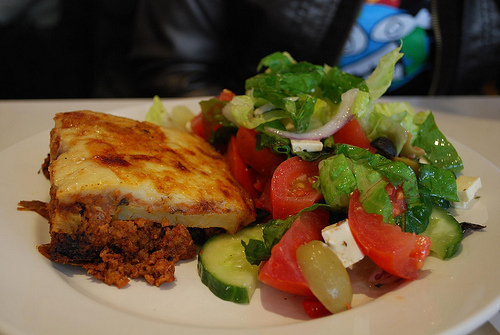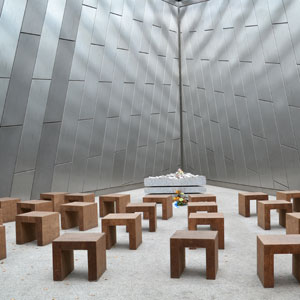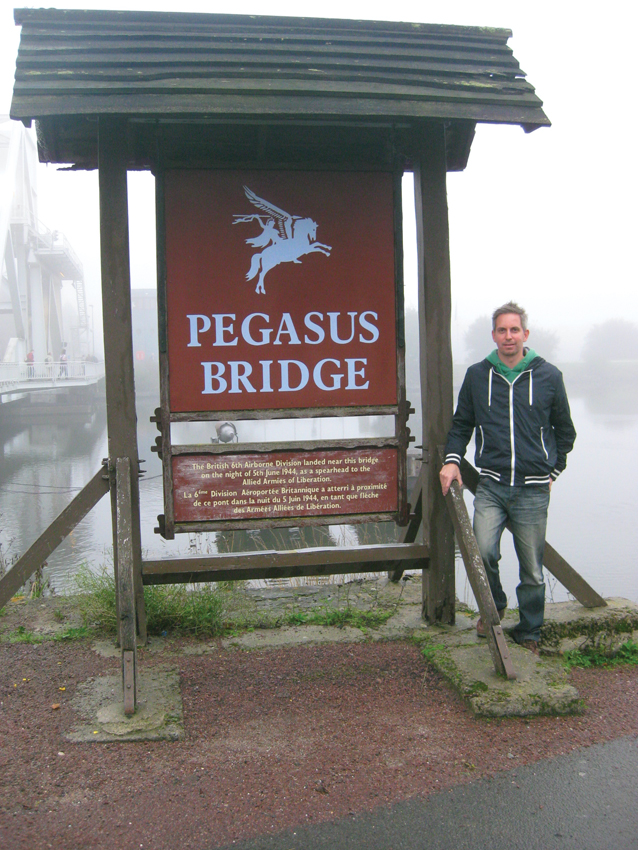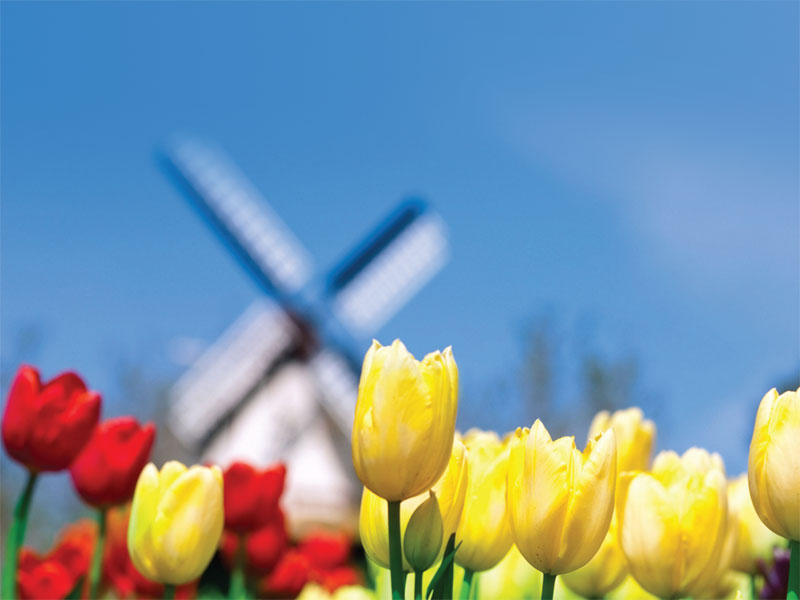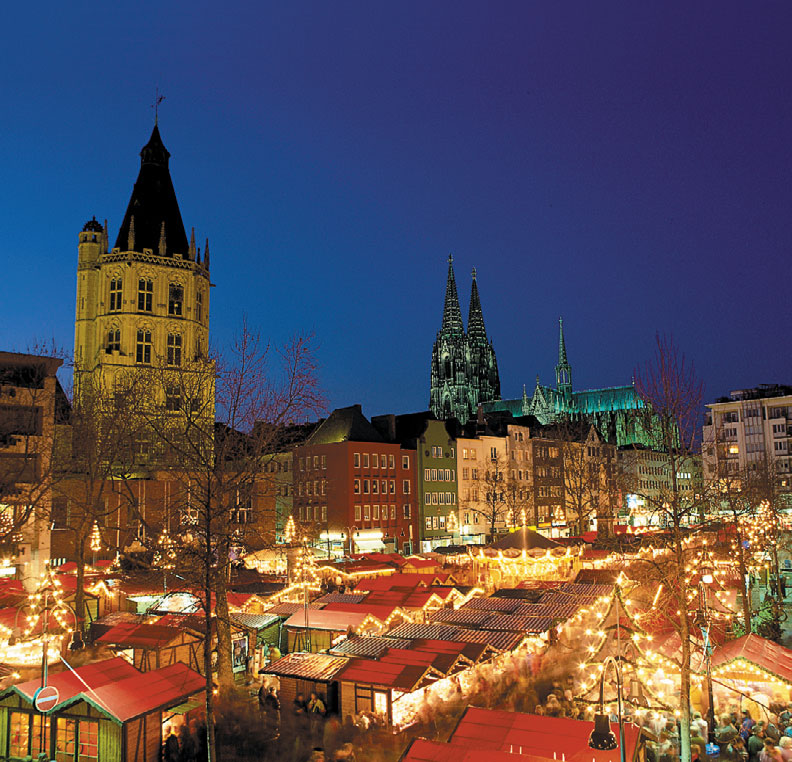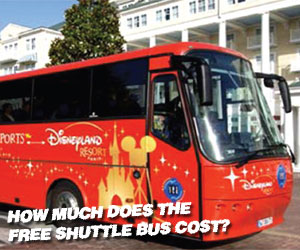Today we are looking at making the traditional Greek dish Moussaka, there are various ways of making this dish but we have gone with Aubergines and a lighter topping but more are available. The inspiration for this dish came after one of our Directors went on our Greek Islands Cruise and told us about how amazing the Moussaka was in Santorini, Greece.
What you will need to make this traditional Greek Moussaka :
About 500g of lean minced (ground) lamb
2 Aubergines, large in size
2 tablespoons olive oil
2 medium onions, finely chopped
2 cloves garlic, chopped
1 heaped tablespoon chopped fresh parsley
1 teaspoon ground cinnamon
2 rounded tablespoons tomato purée
3 fl oz (75 ml) red wine
Salt and ground black pepper
For the yogurt topping you will need:
150ml Greek yogurt
1 medium egg, beaten
50g feta cheese
25g grated parmesan
How to cook it
Pre-heat your oven at 180ºC / 350ºF / Gas 4
First you need to get rid of the high water content and concentrate the flavor of the aubergines.
Dry fry the Lamb until Brown and remove the fat from the lamb before layering into the Moussaka.
Heat a tablespoon of olive oil in to a frying pan and fry the onions, garlic and thyme, without colouring, for about 10 minutes.
Add the minced lamb back in and mix in the parsley, cinnamon, tomato purée and red wine and mix.
Cook for around 20 minutes
Prepare the yogurt topping –
Put the yogurt with half of the cheeses along with the beaten egg and add ground pepper.
Presentation
Line the bottom of a casserole dish with slices of aubergine, then add the meat over the top then spoon over some of the meat mixture. Build the layers of the Moussaka up until all the meat and aubergine has been used.
Cover with the topping mixture and add the remaining cheese and bake in the oven at 180ºC / 350ºF / Gas 4 for about 1 hour until golden and bubbling.
Stand the Moussaka for around for around 25 minutes before serving this will assist in retaining the shape when you serve it.
Serve the Moussaka with a green salad and crusty bread
Image courtesy of Flickr user – avlxyz
The Story Of Anne Frank and Oscar Schindler by Linda Barrington-Smith
Having wanted to go on Leger’s Story of Anne Frank and Oscar Schindler battlefields tour for quite some time, Linda and David Barrington-Smith found it was certainly an experience to remember.
Linda is a Freelance Journalist and David is a professional photographer. They have both travelled with Leger Holidays before and this time they have kindly written an article about their experiences whilst on our tour – The Story of Anne Frank and Oscar Schindler.
On January 20, 1942 in the dining room of a beautiful lakeside villa in the Berlin suburb of Wannsee, 15 high-ranking representatives of the SS, the NSDAP and various ministries met for a conference, chaired by Reinhard Heydrich, to discuss and co-ordinate the implementation of what they called “the final solution of the Jewish questionâ€. The ‘Final Solution’ being the code name for the systematic, deliberate, physical annihilation of 11 million Jews in Europe.
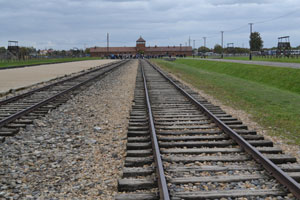
While the enormity of the European Holocaust can be very emotive and hard to take in, Leger’s The Story of Anne Frank and Oscar Schindler battlefield tour helps bring into perspective the events of that terrible period in European history.
The tour is one that we had wanted to take for quite some time. So when the opportunity finally arose, we didn’t hesitate!
The local pick-up arrangements for the trip down to Dover, where we met up with our excellent tour coach drivers Dave and Gary and specialist historical guide Richard Bass, went smoothly, as did the journey to the first overnight stop.
Day two saw the tour start to follow the story of the Frank family with a visit to the Anne Frank House and museum in Amsterdam.
For just over two years Anne Frank and her family hid in the Secret Annexe of the canalside house at Prinsengracht 263 where Anne’s father, Otto Frank had his business.
A bookcase marks the entrance to the annexe, reached via several flights of steep stairs, which they shared with four other Jews.
Although today the rooms are sober and unfurnished, they still breathe the atmosphere of that period of time.
Anne, who was 13 when the family went into hiding, wrote her now famous diary in the annexe. Quotations from this, as well as historical documents, photographs, film images and artefacts illustrate the events that took place here.
On August 4, 1944 the occupants were betrayed and deported to various concentration camps. Only Otto Frank survived the war.
After our visit, the tour continued to Hannover for an overnight stay.
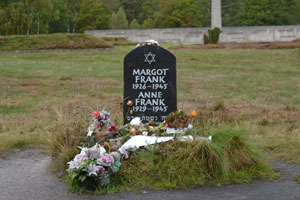
The next day we paid our respects at Bergen-Belsen where Anne Frank and her sister Margot died of typhus in March 1945, only a few weeks before liberation.
Today, Bergen-Belsen is a place of remembrance — a tranquil cemetery with mounds of mass graves containing more than 70,000 people and various memorials — including one dedicated to Anne and Margot Frank.
We have visited the site before, but at that time the new Documentation Centre hadn‘t been opened. A forbidding concrete building, designed to make one aware that Bergen-Belsen was not a pleasant place, we spent quite a while looking at the excellent exhibition. Packed with information, videos, photographs and personal belongings excavated after liberation, it graphically tells the story of the people that worked, died or somehow survived at the camp.
Next stop was Berlin.
The first day in the German capital was spent studying the ‘Final Solution’, starting with a visit to Sachsenhausen Memorial and Museum.
Established as a concentration camp in 1936, up until 1945 more than 200,000 people from all over Europe were imprisoned here; tens of thousands died from hunger, sickness, forced labour and abuse, or were victims of systematic extermination.
Liberated by Soviet troops in April 1945, the freedom was short-lived as the Soviet secret police turned it into a prison camp and the misery and death continued for another five years.
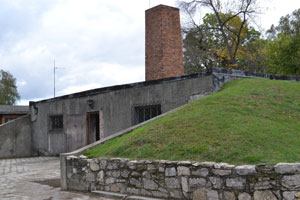
Several buildings and structures survive or have been reconstructed, including the camp entrance, guard towers, cell block, small gas chamber and crematory ovens.
After this sobering visit, a walk was taken across the Glienicke Bridge, where East and West swapped spies during the Cold War, before going on to the House of the Wannsee Conference.
Our second day in Berlin was packed. Starting off at the Berlin 1939-1945 War Cemetery, we then visited the Olympic Stadium before continuing to the Plötzensee Memorial Centre, in the old prison yard behind the modern day prison, where among nearly 3000 people executed here were some of the July 1944 plotters. The execution chamber still houses the original gallows.
After this chiller we saw the German Resistance Memorial Centre, located in the historic section of the former headquarters of the Army High Command at the Bendlerblock. It was here that Colonel Claus Schenk Graf von Stauffenberg and other members of the failed attempt to assassinate Hitler on July 20, 1944 were shot by firing squad.
Then it was on to the Topography of Terror Documentation Centre with exhibitions illustrating the European dimensions of the Nazi reign of terror.
After seeing the site of Hitler’s Bunker, we finished up at the Memorial to the Murdered Jews of Europe. Designed by New York architect Peter Eisenmann as a Field of Stelae containing 2711 stark concrete blocks, it is only by walking among them that the powerful atmosphere of this memorial can be felt.
Next day the tour travelled on to Krakow in Poland.
The first day in this beautiful city we strolled through the old narrow streets of Krakow’s Kazimierz district, which still retains a unique atmosphere of its Jewish past. After the ravages of the Second World War the area became run down. But in recent years it has become a thriving district once again, thanks in part to Steven Spielberg’s Oscar-winning film Schindler’s List.
Next stop was Podgórze, site of the former Jewish Ghetto between 1941 until 1943 and from where the Jews were deported to the nearby Plaszów Concentration Camp and other death camps. Today, the main square has been turned into an evocative memorial to the victims of the Krakow Ghetto, laid out with 70 large bronze chairs symbolising departure as well as subsequent absence.
Close to the ghetto lies Oscar Schindler’s Factory of Enamelled Vessels Emalia, used by Schindler in his remarkable attempt to save the lives of his workforce. It has been turned into a modern museum with ingenious exhibitions combining period artefacts, photographs and documents with multimedia and set-piece arrangements to create a full-immersion experience of life in Krakow from pre-war until after liberation.
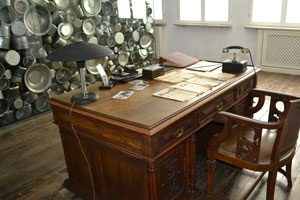
Oscar Schindler, his factory, and the fate of its Jewish workforce feature prominently. The main part of the exhibition dealing with Schindler himself is his office which retains original elements of the interior in the shape of architectural detail and a 1940s map of Europe with city names in German.
Opposite a desk from the period, with an arrangement of Schindler’s family photos, is a stunning glass cube filled with metalware. The walls of the metal cylinders inside the cube bear the names of around 1100 Jews saved by Schindler.
Afterwards the tour headed for Plaszów Concentration Camp, a windswept park where all traces of Nazi atrocity have been erased. But we did manage to see the house that the camp’s notorious commandant Amon Góth lived in and the Plaszów Memorial, dedicated to the victims of the camp.
Next day was spent at the Auschwitz-Birkenau complex — a symbol of terror, genocide and the Holocaust around the world. The total number of victims at Auschwitz between 1940-1945 is estimated at between 1.1 and 1.5 million people, around 900,000 thought to be Jews.
The Auschwitz-Birkenau State Museum includes two sections of the camps — the brick buildings of Auschwitz I and the immense concentration and death camp at Auschwitz II (Birkenau) three kilometres away.
Some of the most chilling exhibits at Auschwitz I, set behind protective glass, must surely be the cans of Zyklon B used in the extermination process, tons of human hair, suitcases with names and addresses of deportees, shoes, artificial limbs, spectacles, children’s toys and clothing — which make pretty powerful viewing.
While there is less to see at Birkenau, its size and solitude makes it more deeply moving than Auschwitz I with its thousands of daily visitors.
At Birkenau one can see the watchtower, railway line and selection ramp — images well-known from documentary films and books; remnants of four crematoria, gas chambers and cremation pits, all of which make a profound impression on everyone who visits the camp.
Leaving Poland an overnight stop was made in Prague in the Czech Republic, where we saw the site of Reinhard Heydrich’s assassination. Then it was on to Nuremberg for a look at the Courthouse where the Nuremberg Trials took place, before travelling through the Rhine Valley on our way to Calais and the ferry home.
Although our epic 4570 kilometre journey was emotional at times, there were lighter moments — a free jazz concert in Celle, dancing to a pop concert at the Brandenburg Gate in Berlin and a cruise on the Rhine among them.
It was certainly an experience to remember.
Keep an eye in your local newspapers and magazines for further details about this thought provoking tour from Linda and David Barrington-Smith
Tales from the road
Andy Parkin, Leger’s Assistant Studio Manager has been designing Leger brochures for the past 14 years and has worked on many of Leger’s Battlefield Tours brochures. In October this year he left the comfort of the office to explore the D-Day Battlefields in Normandy.
I always had a general interest in World War II, but more specifically the D-Day landing beaches. So when I was given the opportunity to join a Battlefields tour, the D-Day Beaches tour was the obvious choice.
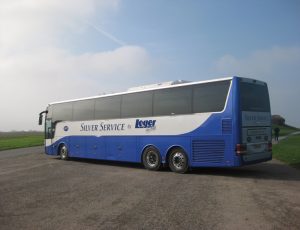
I was travelling on one of Leger’s Silver Service coaches – despite working for Leger for so long I rarely travel by coach – and was surprised at how comfortable it was, plus, the fact that we had comfort stops along the way gave us time to get a bite to eat and stretch our legs. At the back of the Silver Service coaches there’s even a lounge, so people headed there for a chat or just to mingle with the other passengers.
What time did the excursions start and finish each day?
We got on the coach around 8.30am and got back about 5ish every day. It was very busy each day as we had a lot to pack in but we had plenty of time to get to all the places of interest on the itinerary, and also time for a sit down meal for those who wanted. We didn’t get any free time as such, but we could have a wander around on our own at most of the places we visited. To be honest, I stayed with the guide because I wanted to hear what he had to say. He really brought these places to life – without him it would’ve been hard to understand the full story so we all tended to stay together as a group. Each day was packed full of interesting facts and unbelievable stories of bravery and, of course, some sorrow.
How long did you spend on the excursions each day?
It all depended on where we went and what we saw. For example, we spent 1 hour 20 minutes at Omaha Cemetery which, after the guide had told us a few stories, still wasn’t long enough. I personally would have liked another 30 minutes or so to have a look around the Visitors’ Centre, but overall the time we had at each place was just about spot on. We covered lots of miles on the trip but there was certainly no time to get bored as people were chatting about what they’d seen and learnt. On the way there we watched Dad’s Army which gave most of us a laugh and, of course, no visit to the D-Day Beaches would be complete without watching The Longest Day starring John Wayne.
Are the beaches well kept? Are they still used for recreation?
This is a very good question and one of the facts that I found quite touching. All of the D-Day landing beaches and the surrounding areas are very well respected and looked after and this is passed down to the local people from one generation to the next. During the summer months all of the beaches are used for recreation purposes, except Omaha Beach, the hardest hit of them all.
What was the Specialist Battlefields Guide like?
Our guide was Richard Bass, a retired police officer with an unbelievable wealth of knowledge of the D-Day landings and the immediate aftermath. What I would say about trying to understand what happened there is that it’s like trying to do a jigsaw puzzle you can’t finish yourself: you know where the corners and edges go, but you need someone to complete the big picture. That’s where Richard, our guide came in. He really did put meat on the bones if you like, and at every place we visited went into great detail about what had happened there.

I had a few brief conversations with Richard as we walked around the battlefield sites, as did many of the other passengers. He told me he’s been working for Leger for 9 years and is still learning new things every day. I asked him if he’d ever been caught out by a question that he couldn’t answer. He said… “yes by a 12 year old boy, he asked me about a grave in one of the cemeteries we had visited and I just didn’t know the answer, so as soon as we got back I researched the question and got the answer for him… it happens sometimes and fortunately it hasn’t happened sinceâ€.
What were the passengers like?
We had a fairly mixed group of 30 male and 13 female passengers which made for a very well-balanced group, with couples and a few singles mixed with groups of friends and fathers with sons etc. After the day’s events most of us met up, either at lunch time or at the hotel bar for a drink to talk about what we’d seen and what was on the itinerary for the next day.
You travelled alone on this tour. Would you have enjoyed it more if you were travelling with someone else?
Possibly, but you soon get talking to the other passengers, all with a common interest, I never felt alone because of the nature of the tour and as a group we’d always got something to talk about. If I was to go again I would take my Dad, he’s always had an interest in the Second World War. I think he’d find it just as fascinating as I did.
Was the tour as you expected?
It was, and more! There’s so much detail and so much to take in. I never thought that I would remember everything – you just can’t – but once you look back at your pictures the memories soon start to come back. I’ve even got one of Richard’s books on my wish list so I can learn more about the places we visited and the events that took place there.
Did you think the tour was value for money?
The guide was worth the money alone! You can’t put a value on someone’s knowledge, it’s priceless! I’d love to go on another Second World War tour because this has got me fired up for more.
Would someone with absolutely no knowledge in D-Day Landings enjoy the tour?
It’s a great introductory tour for anyone who has a general interest in the events surrounding D-Day – you don’t need to know much about what happened, as long as you’re interested, that’s the main thing. Even someone who joined the tour with absolutely no knowledge of what happened on D-Day would have a great understanding of the events that unfolded after being there with the guide.

What was the best part of the tour?
I found all of it fascinating but Omaha Beach was, for me, the most emotional and poignant, maybe because it’s so well documented and I’d seen it in films such as Saving Private Ryan. It’s a very subdued place and it’s not until you’ve heard the stories and you’re actually standing on the beach that you fully appreciate what the troops were up against.
Can you sum up the D-Day Landings tour in 5 words?
Emotional, fascinating, informative, engrossing, captivating, educational, memorable and inspiring… I know that’s more than five words but if you join the tour for yourself you’ll understand why five words is simply not enough.
Find out more about this tour here.
Bloomin’ Marvellous Breaks
By Margo
I got into gardening just after I got married and I’ve been addicted to it ever since. Don’t get me wrong, I’m no Charlie Dimmock but I’m certainly not afraid of grabbing a trowel and some compost if there’s a bit of landscaping to be done.
I suppose I’d politely class myself as an experimentalist. I like to indulge in my hobby and follow the likes of Monty Don and Alan Titchmarsh before interpreting their ideas in my own garden. So far, this approach has seen me right. And, apart from a minor mishap with a 7ft Verbena, I have to say I’m pretty bloomin’ proud of my home-grown sanctuary (forgive the pun)!
For my next wave of inspiration, however, I’m planning a little trip overseas with a coach-load of my fellow flower enthusiasts. Having worked at Leger for so many years, it’s hard to believe I haven’t been on a horticultural-themed tour before now but it’s certainly always been on my list. Over the years, I’ve booked hundreds of our customers on a garden-based tour and the feedback they’ve given on their return has always been great. In fact, it’s enough to leave you green-eyed as well as green-fingered! If, like me, you’ve been considering a green getaway yourself, here are Leger’s top three reasons to persuade you to turn your gardening hobby into a hob-iday:
• The sights: There aren’t many places in Europe where you can immerse yourself in a sea of springtime flowers like those found in Holland, France and Brussels. In one easy trip, you’ll see tremendous trees, flowering shrubs, a huge variety of perennials, water gardens, fountains and lakes; it really is a gardener’s paradise.
• The scale: part of the joy of gardening is seeing all the colours, structures and shapes of plants working together. However, until you’ve experienced the acres of flora at Keukenhof Park (Holland) or the grand designs of Monet’s Garden (France) you can’t truly appreciate just how inspirational a garden can be. With so many carefully landscaped scenes in one place, you’ll be buzzing with ideas to take home with you.
• The shared experience: there’s nothing as enjoyable as sharing some of the most spectacular garden scenes in Europe with people that share your appreciation and passion for gardening. Of course, it’s up to you how much you talk about your experience on the coach home!
If you have any further questions about Leger Holidays’ horticultural tours please do get in touch through our Facebook page or call us at 01709 787 463.
Oh little town of Rudesheim
It’s beginning to look a lot like Christmas up at Leger Holidays this week, as bookings for our festive markets continue to fly in. From the bustling bazaars of Bruges to the Christmas cave markets of Valkenburg, Brits are heading to Europe by the coach load to get their festive fix. But what is it about these seasonal markets that make them so magical? We asked our driver of 24 years, Phil Hayton, about his experience:
“Over the years, I must’ve visited the European Christmas markets over 120 times and, let me tell you, I never get fed up of them. From Berlin to the Tyrol, there are so many markets to choose from and each location has its own character and offers something completely different to the next.
“Cologne is great for those that want a bit of variety; it’s got six different markets spread out across the town and a cracking atmosphere to enjoy. Whereas Rüdesheim offers more of a picture-postcard setting with its wooden chalets and olde-worlde feel. One thing they do all share though is an overwhelming jovial mood that you just won’t find anywhere else.
“People often ask me which specific part of the markets I enjoy the most but, I have to say, I struggle to name one thing. The food and drink is always good. For me, there’s nothing better than wrapping your hands around a glass of hot Glühwein or enjoying a sneaky bratwurst sausage between meals! There’s just so much to try though and the smells travel for miles around, there’s certainly no chance of dieting whilst you’re there!
“The atmosphere is also second to none. The decorations look great, the locals are friendly and you’re surrounded by crowds of shoppers that are feeling just as festive as you. We even deck our coaches out with fairy lights to join in on the seasonal spirit!
“All I can say is, if you’ve never been to an original Christmas market before, get it on your list! We do have some great markets here in Britain but nothing really compares to seeing one in Europe itself. It’s hard to explain as the sights, sounds and smells are unlike anything I’d ever experienced before but even now, 120 trips later, I can’t wait to go back again!”
Fancy booking yourself a merry little Christmas this year? Be sure to head over to our website for the more details or pop over to Facebook to ask for further advice from the team.
Tasty Mexican BBQ Chicken Enchilada Recipe
This cheesy, saucy, BBQ chicken dish is a great alternative to fajitas for those tortilla wraps lurking in your cupboard! Plus, it’s a great dish to prepare ahead of time and then bake when you’re ready.
Our recipe below will take about an hour to prepare and cook and should serve four.
What you’ll need
2 finely chopped onions
1 finely chopped garlic clove
3 diced peppers
Mexican spice mix (Old el Passo or Discover packs are fine).
A large jar of passata
8 tortillas
350g BBQ flavoured, pre-cooked chicken
1 chopped red chilli
75g grated cheddar cheese
BBQ sauce
How to cook it
- Pre-heat your oven to around 160°C.
- Add a glug of olive oil to a heavy bottomed frying pan and throw in your onions, garlic, peppers, chilli and a pinch of your spice mix. Cook until soft.
- Pour the passata into your pan along with the remaining spices. Simmer over a medium heat for five minutes.
- Lay out your tortillas and place a small amount of chicken into the middle of each. Top with your tomato and vegetable mix, a small sprinkling of cheese and then roll them up and place into an oven proof dish.
- Once all 8 of your tortillas have been added to your dish, pour the remaining tomato and vegetable mix directly on top of the tortillas.
- Squeeze over a good dollop of BBQ sauce and your remaining cheese.
- Cook in the oven for 20 minutes or until the cheese and tortillas are golden.
Freshen things up
If you would like to freshen your dish up a little try adding some crème fraîche to the top of your enchilada’s and serving on a bed of lettuce. This will ensure your enchilada’s aren’t too stodgy but are still delicious!
Image courtesy of flickr user acererak
Uncover a deeper understanding of Flanders Fields
The small city of Ypres in Flanders was once the centre of the European cloth trade. A pre-1914 guidebook described it as a ‘medieval gem’ in terms of its architecture, but during the four years of the Great War it became a symbol of sacrifice – the great British bastion on the Western Front.
By the close of the conflict more than 250,000 British and Commonwealth soldiers had died at Ypres; one in four of Britain’s casualties in the whole war, and roughly one in three of those who died on the Western Front.
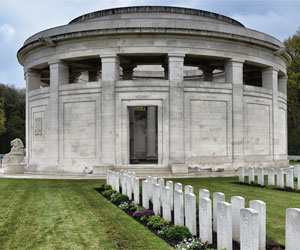
Gas was first used here in 1915 and it later saw the introduction of the fearful Mustard Gas in 1917. Extensive trenches were constructed by the spring of 1915 and there was two years of stalemate with no major battles; yet casualties continued on a daily basis, as the many cemeteries testify to today.
One of the war’s most symbolic battles was fought here – Passchendaele – producing those almost standard images of the Great War: vast crater zones, and a muddy, mangled battlefield. In 1918 the German advance was once again stopped here and some of the first American troops in action took part in the final battle, when tanks, aircraft, artillery and infantry all working together finally ended the stalemate in Flanders.
A true insight
Our new Flanders Fields tour looks at these fascinating aspects of the war around Ypres, by taking some old favourites and adding in many of the new sites rapidly opening in the lead up to the centenary of the Great War in 2014. We start at the newly-renovated In Flanders Fields Museum, which has not featured in our programme for some years.
The new museum is excellent, leading the visitor through the background of the war, the first days of fighting in Belgium and the formation of the Ypres Salient. There are many new exhibits on display and some amazing and engaging films.
WW1 archaeology features heavily and a display on the Yorkshire Trench and Dugout ties in nicely with one of our later visits. In fact, there is so much to see, we have put aside most of a morning to spend here, followed by a proper daytime look at the Menin Gate, looking at its background, architecture and history, and the whole commemoration of the missing.
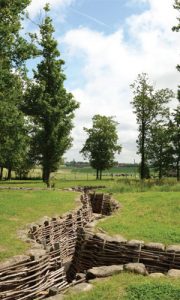
Real stories
Harry Patch was the ‘Last Fighting Tommy’. On the tour we follow his story and see where he fought and a new memorial to him on the battlefield where he served in 1917. Trenches also feature heavily in the tour, from the newly-constructed trench system at Zonnebeke where the evolvement of British and German trenches can be seen, to the preserved remains of Yorkshire trench to the fascinating Bayernwald trenches, a place where Hitler served in 1914.
Everything in detail
High ground and its possession and repossession by both sides is the key to understand the battles in Flanders and we look at the Messines Ridge and the huge mining offensive there, seeing some of the mine craters, including the largest mine fired at St. Eloi – more than 95,000 pounds of explosive! We also go up Kemmel Hill – the highest point in Flanders – and reflect on the price paid for the battles in Flanders during the Great War.
This new tour enables us to concentrate on a popular battlefield location, look at locations in some detail, honour the veterans and visit new sites which offer us a fascinating insight into what the war in the trenches of Flanders was really like.
By Paul Reed, Leger’s Head Battlefields Guide
Destination: Morocco
Moroccan culture can be an exciting experience. Wander the labyrinth of small streets and alleyways, filled with stalls selling everything imaginable, and an aroma of saffron and orange blossom among sacks of almonds piled high as mountains.
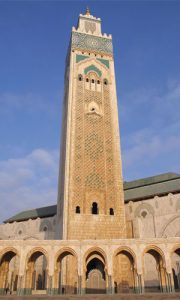
COLOURFUL CULTURE
The almost medieval-like hustle and bustle of Morocco is, for most travellers a world away from their own cities and towns. The people are friendly and the place is pulsing with energy. Hospitality is really a part of their culture so you can strike up friendships virtually anywhere if you have the right attitude. Usually this results in further association with these dynamic and interesting people and a real taste of Moroccan life.
MANY TALENTS
There are so many different ways that the people express themselves – in carpets, clothing, jewellery, ceramics, sculpture, painting, carving and calligraphy. If you ever have the opportunity to visit this country, you should consider buying some of the local artwork. Not only will it provide you with a little memento of your trip, but it will help out the local people who are usually quite poor. Don’t forget to get your leather goods from the tanners in Fez.
FLAVOURS AND SPICES
Spices hold pride of place in any Moroccan kitchen and are used skillfully to create a variety of distinctive flavours to tempt any palate. Common spices include cumin, cinnamon, turmeric, ginger, paprika, aniseed, pepper, coriander, sesame seeds, saffron and mint. Couscous also plays an important role in Moroccan cuisine and is gaining popularity worldwide.
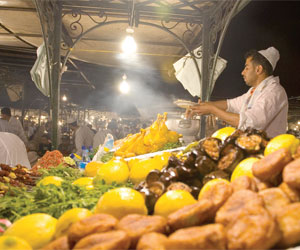
Probably the most famous market in Marrakesh is the Djemaa El-Fna. It really comes alive in the evening. You can easily spend an entire night here wandering from stall to stall. Don’t eat a whole dinner, just have little tastes: there are grilled meats, steamed snails, lovely desserts… Let’s just say you won’t go hungry.
PEACE AND TRANQUILITY
Away from the hustle and bustle you will find peace and tranquility at The Menara, surrounded by magnificent gardens, tranquil waters and snow-capped mountains in the background. Fascinating and full of history, the culture of Morocco is also home to incredible architectural wonders.
If you would like to head off on your own Moroccan adventure, you can find out more here.
Tales from the road… Postcards from Croatia
Caroline Thorpe, Leger’s Design Studio Manager joined an 8-day tour of Dubrovnik and the Dalmatian Coast to learn more about the area and see why its popularity has grown in recent years.
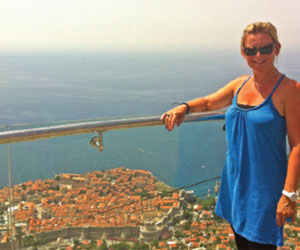
Following the beautiful coastline of the winding bay of Kotor, known locally as Boka Kotorska, our destination was the beautiful, walled city of Dubrovnik.
This was just one part of an 8-day tour I’d joined, taking in not only Croatia, but also visiting Montenegro, Albania and Bosnia-Herzegovina.
En route to Dubrovnik we passed buildings decorated with vibrant pink bougainvillea and parks thick with palms and oleander – a common sight in this part of the world – before enjoying a short visit to the wonderful, quiet little town of Cavtat. Here, waterfront cafes line the quiet promenade, providing breathtaking views across the clear blue water, along with an excellent selection of mouth-watering cuisine.
Destination Dubrovnik
Dubrovnik is described as ‘the most perfectly preserved medieval town in the world’, so, as this was my first visit to the city, I joined the optional city tour to see the main sights of the city – I didn’t want to miss anything! The guide who would show us the sights of Dubrovnik, Tolsten (or Paul, as he told us to call him), was very flamboyant and seemed to know everyone in the town!
It was another hot day, and walking through the Pile Gate, the traditional entrance to the Old Town, we found ourselves in a lovely broad avenue known as Placa with smooth, cream-coloured flagstones stretching its 958- foot length.
We passed Onofrio’s Fountain with its huge, red brick dome sitting above sixteen fountains – ornately carved faces sitting in a stone wall spurting water from their lips – and followed Paul into the cool, Franciscan church. He gathered us round with his catchphrase (“now then my dear friendsâ€) as he lead us up into the backstreets lined with cozy little restaurants, where waiters were busy laying tables and sweeping around in readiness for their lunchtime customers.
Back once again on Placa, Orlando’s Column was right in front of us – and here the magnificent Bell Tower stands high above the buildings and cluster of restaurant umbrellas below.
A Different View
As Paul said a final “goodbye my friends,†I decided to head to the cable car before the sun reached its full, midday strength. I’d bought my ticket before I arrived at the cable car station, which meant I got directed to the front of the queue, and onto the cable car which would take me to the top of the Srd Hill.
The ride itself took just 3 minutes, carrying us high above the terracotta roofs of the town, with excellent views of Dubrovnik and out over the crystal-clear Adriatic Sea to the green island of Lokrum. At the summit, there’s a shop, a modern amphitheatre and an open-air restaurant. It’s a great viewpoint to appreciate the structure of the lovely town unfolding below you.
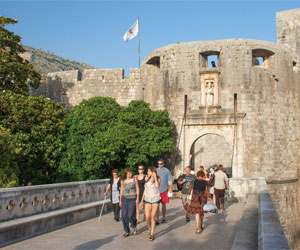
Exploring the Town
I headed, along Placa – the whole length of it lined with intriguing little shops – with wonderful, narrow stone alleyways on either side packed with more shops, restaurants and bars… a great place for people watching and cooling off in Dubrovnik’s summer heat.
I wandered around the streets of the Old Town – a network of charming, cobbled streets where buildings were decorated with colourful scarves, handmade jewellery, delicate lace and leather goods displayed outside the numerous shops.
A Breath of Fresh Air
As I walked round to St. John’s Fort – which I’d seen earlier from the top of Srd Hill – a different glimpse of the city greeted me. The bustling harbour promenade is a hive of activity, where cruise ships bring visitors to the city and boats take day-trippers out to neighbouring islands and resorts to see more of the wonderful sights this area has to offer.
Walking the Walls
As I headed back into the Old Town. I passed people clambering up along the stone ramparts of the town – considered to be one of the great fortifications of the middle ages – draped with pale and bold pink oleander bushes, for the one-and-a-quarter-mile stroll above the carpet of terracotta rooftops. The high wall encompasses the whole city, running an unbroken course of over 6,300 feet, with strong forts as part of its defence system. I would’ve loved longer to walk the city walls for myself, but it was time to leave.
Reflection Beneath the Stars
That evening, back at our hotel I enjoyed a quiet drink on the hotel’s terrace. It had been a great week, with lots of fabulous memories to take home with me. A wonderful, unforgettable Croatian adventure.
Have you been to Croatia recently? Would you like to share your story with our readers? If so, you can get in touch using the comments section below.
Britain's Holiday Howlers Revealed!
‘Booking brain’ leaves our customers asking the funniest questions…
Does the ferry sail straight to Disneyland Paris? How much does the free shuttle bus cost? Apparently, asking a holiday howler is becoming an increasingly common affair amongst Brits arranging their holidays, as the excitement about escaping abroad truly sets in. Our research reveals that, the closer you get to your getaway the more likely you are to trip yourself up with a question you later laugh about. We believe that the ‘booking brain’ may also lead to lost luggage, a packing faux pas and relationship hiccups in the build up to your break.
Speaking about the holiday howler trend, Leger Holidays’ Marketing Director, Huw Williams said:
It’s only natural that our minds start to wander as the prospect of a holiday draws closer. Having spent all year battling the daily grind, we need to be able to drop the pace for our holidays and this is when even the most focussed of minds will begin to wander off to an exotic beach or cosmopolitan cityscape.
A few minor mishaps and a holiday howler can be expected on every break and for some they make the most interesting memories, providing a bit of light-hearted relief and humour to share. However, to stop things turning sour, the trick is to start your preparation early so that you can truly enjoy the build-up without any major complications. Or, for an even easier experience, let us take care of all the details for you.
According to research, here are a few of the top booking bloopers. Recognise any?
- In relation to self-drive holiday – Booking agent: “What car are you taking?†– Holidaymaker: “John’sâ€
- Holidaymaker: “How much does the free shuttle bus cost?â€
- Holidaymaker: “Can you explain what self-drive means?â€
- In relation to a journey back from the continent – Holidaymaker: “When you say we would gain an hour on the way back, is that because the wind is behind us on the ferry?â€
- Holidaymaker: “Does the ferry sail straight to Disneyland Paris?â€
- Holidaymaker: “Is Dover in the UK?â€
- Holidaymaker: “At Disneyland Paris, can I have a room with a sea view?â€
- Holidaymaker: “What language do they speak in France?â€
- Booking agent: “How is your party made up?†– Holidaymaker: “They’re ecstatic!â€
- Holidaymaker: “Are the Disney hotels OK for kids?â€
- Holidaymaker: “I need to change my Mum’s name to what’s on her passport. Her date of birth is still the same though.â€
Do you recognise any of these holiday howlers? Have you made any yourself? Let us know in the comments below.

